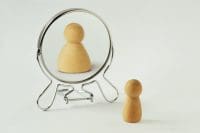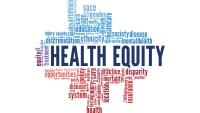“In the beginning was the Word, and the Word was with God, and the Word was God.” (John 1:1). “Through him all things were made.” (John 1:3). It seems the apostle John was both prescient and far ahead of his time. Today, his words might be called a meme.
The term meme, which means something imitated—a pervasive thought or thought pattern that replicates itself through cultural means—was coined by British evolutionary biologist Richard Dawkins as a concept for explaining how ideas and cultural phenomena spread. Dawkins went so far as to say, “What lies at the heart of every living thing is not a fire, not warm breath, not a ‘spark of life.’ It is information, words, instructions…If you want to understand life, don’t think about throbbing gels and oozes; think about information technology.”
We are surrounded by information technology, and our skills include e-mailing, googling, blogging, texting, and tweeting. Today, most people in developed societies seem to think they can’t live without a smart phone. Yet few of us have even a faint idea how information technology is changing us and our world. For example, how do ideas spread today? In many cases, they spread by “going viral” on the Internet. As the word viral implies, an idea spreads much like an infectious agent, replicating itself and spreading throughout a population.
Cutting through scientific jargon to get to the chase, American neurophysiologist Roger Sperry, as quoted by James Gleik in the Smithsonian Magazine (May 2011), wrote, “Ideas cause ideas and help evolve new ideas. They interact with each other and with other mental forces in the same brain, in neighboring brains, and thanks to global communication, in far distant, foreign brains. And they also interact with the external surroundings to produce in toto a burstwise advance in evolution that is far beyond anything to hit the evolutionary scene yet.”
Some memes survive while others do not. Memes are complex concepts, distinct and memorable, with staying power. What are nursing’s memes? There are many—and more are emerging. Although almost all nursing memes on the Internet have to do with jokes, nursing’s memes actually are ideas and ideals that shape and form the profession and the professional—compassion, for example. Capable and competent have always been influential. Then there are commitment and courage. Educated (but not trained; that old meme has fallen into disrepute). Nonjudgmental has been around for 30 years. Research-based, added only recently, has been replaced by evidence-based.
Other memes that are becoming extinct include physician’s handmaiden (replaced by knowledge worker). Loyalty as a nursing virtue has been replaced with patient advocate. Careerist arose in the 1980s, to be rapidly replaced with professional. Some nurse educators and researchers call themselves nursing scientists, but the essence of nursing is still the bedside nurse—another enduring meme.
Like genes, memes have effects on the wide world beyond themselves. They are the ideas that form the DNA of the elaborate theories and philosophies drawn from them. In some cases, their effects can be both practical and powerful. As they extend their influence on the world, memes influence the conditions affecting their own chances of survival (for example, the meme that nursing is a female profession). Some memes have evident benefits for their human hosts. Others can be demeaning; think of refrigerator nurse for nurses who work part time.
Perhaps the analogy of memes with biology and disease was inevitable. Before anyone understood anything of epidemiology, its language was applied to types of information. Such emotions as panic can be infectious. A tune can be catchy. An attitude, as we all know, can be contagious.
But only in the new millennium, in the time of global electronic transmission, has the identification of epidemiologic terms to describe other phenomena become second nature. Ours is the age of virality: viral education, viral marketing, viral e-mail, and viral video and networking. Researchers studying the Internet as a medium use not only the language but also the mathematical principles of epidemiology. So it behooves nurses to pay attention to the memes that are catching and spreading within our profession.
Leah Curtin, RN, ScD(h), FAAN
Executive Editor, Professional Outreach
American Nurse Today



















3 Comments.
Since entering nursing in 1972 I have always stated I was educated not trained. A meme I would love to see used from now on. Let’s use trained where indicated; I train my dog, monkey,horse,etc. Thanks Leah, I always love hearing/reading your opinions and ideas.
Interesting you use a bible quote as an example seeing that Dawkins is a prominent atheist. A little passive aggressive, perhaps?
I don’t get is. How is a ‘meme’ and idea, and how does an idea shape a profession? And who cares anyway?